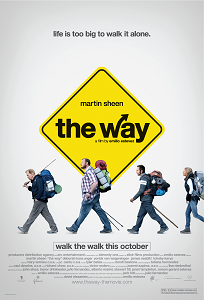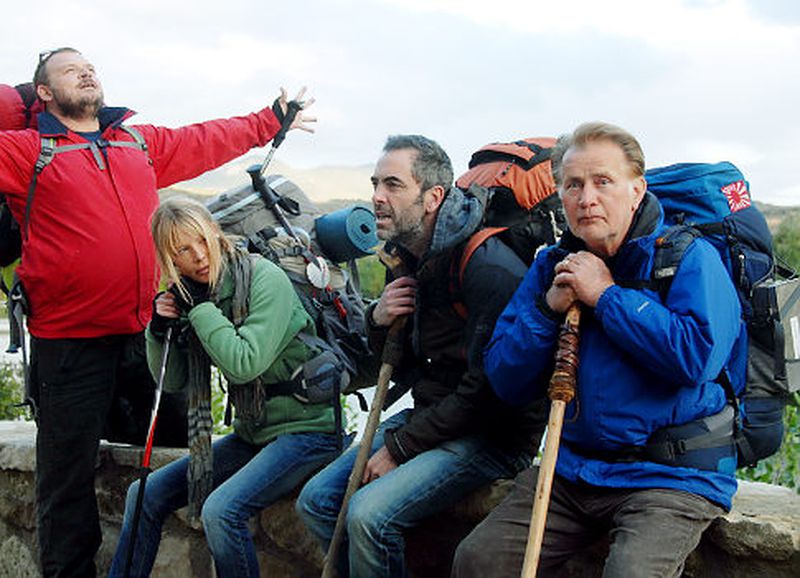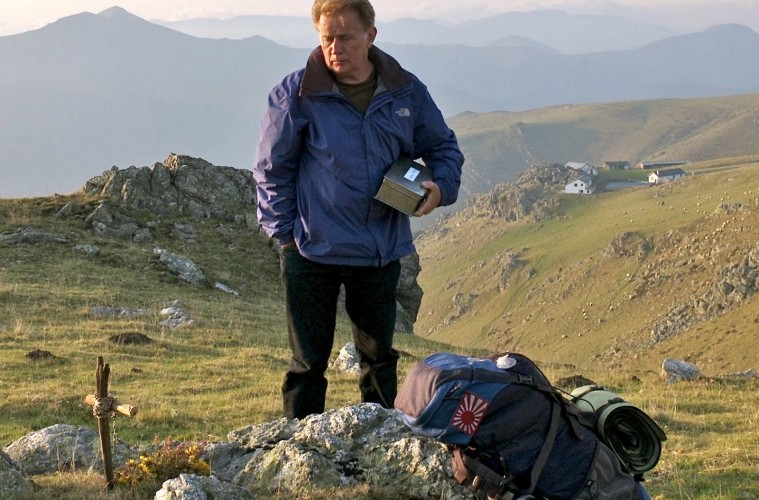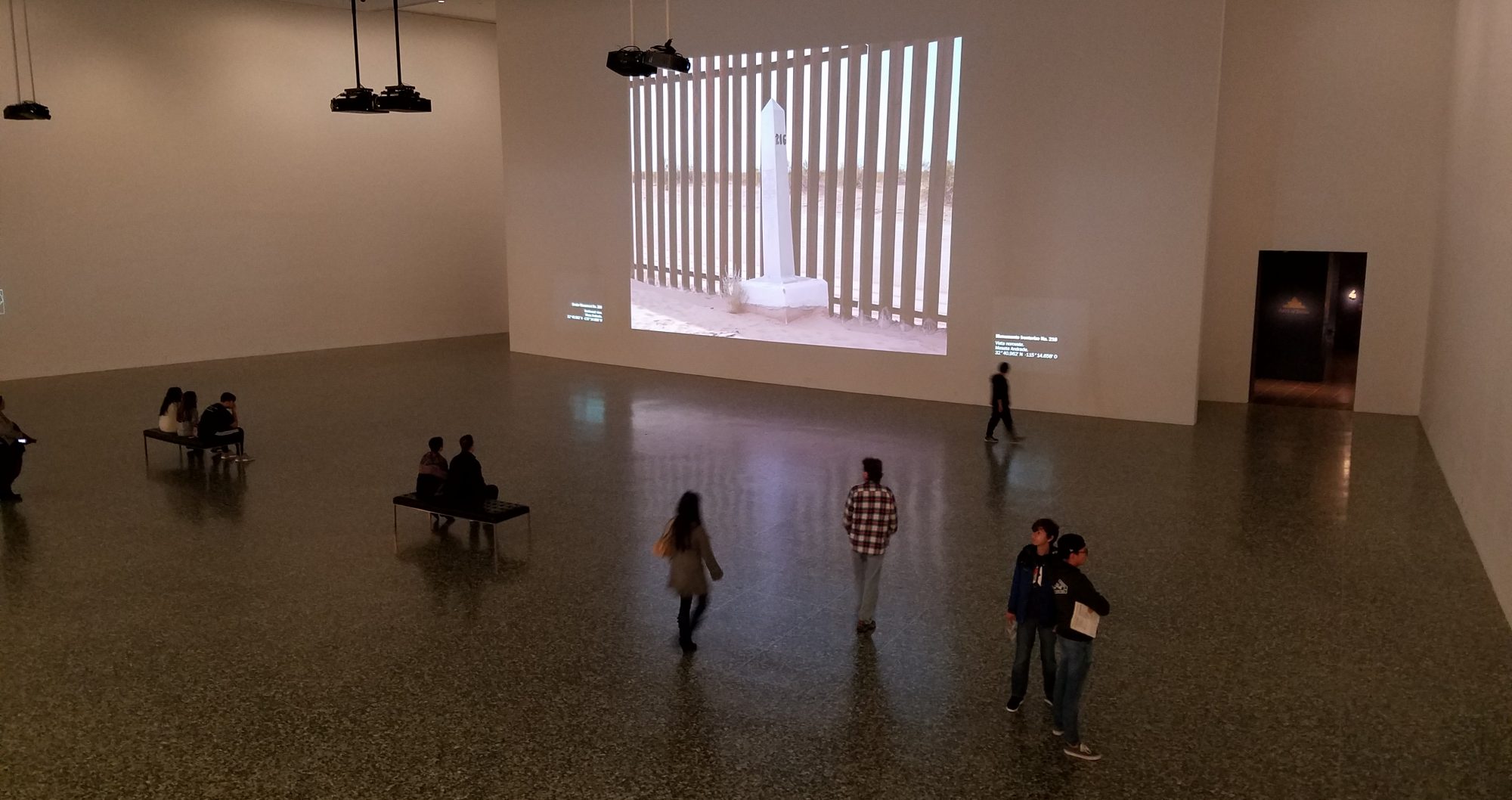If one thing positive should come out of my personal experience with the pandemic of 2020, it would be my growing interest and commitment to do a future pilgrimage to Santiago de Compostela, Spain, and to walk what is known as El Camino de Santiago, or “The Way”: https://en.wikipedia.org/wiki/Camino_de_Santiago
An earlier blog post described this commitment to walk The Way hopefully in 2025 or sooner once the world has healed and when I know I am prepared to fulfill to make this journey. Starting in 2021, I will embark on both a scholarly and personal journey to find answers on what it means to have a “calling.”
In the scholarly frame, I want to develop a multi-year study asking individuals who work in higher education student affairs how they define their own “calling” to work in this profession. This part of the journey will involve both understanding and critiquing how our callings are impacted by our college and university work cultures. From the most recent entry-level to the seasoned senior-level professionals, I aim to interview various individuals about their work and how they define their meaning through work. As a higher education researcher, I am excited that I can add this interest in my scholarship repertoire. In the personal frame, doing this scholarship allows me to take a spiritual journey on how define myself as “becoming” – someone who has achieved a good number of stated goals, but yet has not fully reached the peak of what I know I can become – a certain sense of self-actualization.
In combining both the scholarly and personal frames in this research to dissect and evaluate what a “calling” means, I hope to fully shape my worldview that allows me to describe how my own callings are connected to how my colleagues in higher education understand their callings to do “good work” in higher education. Using the ancient ideas of St. Benedict, the Benedictine motto of ora et labora – prayer and work – and the writings of Benedictine monk, Br. David Steindl-Rast, in addition to organizational theory and higher education organization behavior literature, I aim to create a new framework of higher education culture where care, meditation, collaboration, and play are combined to remind ourselves that it is humanness that drives education and learning.
During 2020, as my interest in this new line of scholarship grew and my interest in learning more about El Camino de Santiago during the pandemic, so too did my interest in viewing one of the few Hollywood films that uses spirituality and the Camino as main focal points. Emilio Estevez’ film, The Way, was immediately one I wanted to view to build my curiosity further in possibly adding walking The Way as a culmination of my scholarly and personal journey.

First, before describing this movie, I have to confess that I have not cried tears of pure joy as much as I did while watching this film. One scene and one moment struck me as one of the most emotional things I ever viewed on film. When I reached that moment in the film, it was unexpected and surprising. Having these two emotions reminded me of Benedictine monk Br. David Steindl-Rast’s writings on gratefulness and how being grateful for life in general revolves around the central concept of surprise. Throughout Emilio Estevez’ film, there are many moments of surprise that faces Martin Sheen’s character, Dr. Thomas Avery. Another confession I have to disclose is that I consider Martin Sheen to be one of the most compelling actors on TV and film. His ability to show his emotions on his face are seen throughout this film. In seeing his emotions throughout the film, you are able to witness the many instances his film character experiences gratefulness while he walks The Way.
I do not want to use this blog entry to give away details on what those grateful moments are, but I will share some thoughts I wrote as I viewed the film and the many messages it provides, especially to those who consider walking The Way. Director Emilio Estevez obviously shows respect to the many pilgrims who walk for religious reasons and also recognizes those who walk for sheer adventure. Estevez uses the Jack Hitt book Off The Road as inspiration for the scenes and encounters Dr. Avery experiences in his own pilgrimage, which occurs due to the tragic death of his son on his first day of doing his own walk. Providing this point in the film’s plot is not a spoiler, in fact it occurs in the first 15 minutes or so of the film. What develops is how Sheen’s character still learns from his son even after his passing. We also learn about the bond that exist between the two. While presented as a relationship filled with conflict, one starts to notice that the father/son connection was always strong and loving. In fact, Dr. Avery decides at the last moment to complete the walk his son started to honor him and to understand why he traveled halfway across the world to walk 790km (almost 500 miles) starting in France and ending at Santiago de Compostela.
Throughout the film, Dr. Avery encounters fellow peregrinos – pilgrims – walking The Way. Each has a reason for walking and we learn throughout reasons why they are taking on their journey. At first, Dr. Avery is cold and distant to these fellow walkers, but he soon understands that El Camino demands community and fellowship with fellow peregrinos who join you throughout the journey.

Dr. Avery’s first goal on his journey is to remember his son by spreading his ashes on various key markers on The Way. However, the goal of The Way slowly is understood in each person and stop he makes on his way to Santiago de Compostela. Upon his first steps, he receives sage advice from a helpful and caring French police captain who comforts Dr. Avery in preparing his son’s ashes. “You walk the Camino only for yourself” he advises as Dr. Avery tells him he will complete the walk his son started. A bit stubborn at start, Dr. Avery hears this advice as just another voice that he hears during the chaos that is surrounding him immediately after his son’s death. However, this phrase soon becomes an important theme as the film slowly follows each lesson Dr. Avery receives that always connects to this advice.
To provide company, Dr. Avery connects, sometimes reluctantly, to other walkers from different parts of the world. There is Jost from Amsterdam, Sarah from Canada, and James from Ireland. Each connect with Dr. Avery at different parts of his journey and soon they become companions that grow close to each other and soon disclose their own reasons for walking The Way.
To go into detail the stories, the encounters, and emotions these four experience together will take away the surprises in viewing the film. However, I will say that one pure joyous aspect of watching it to witness the beauty and symbolic rituals that peregrinos experience in their journey on the Camino Frances part of The Way. One of the most important lessons received from this film is the power and importance of storytelling. The Way/El Camino is quite literally marked by the stories of millions of walkers who have journeyed this route to Santiago de Compostela. The stories are usually accompanied by countless bottles of Spanish wine and the relationship between storytelling and wine is quite apparent in the film. Not because alcohol breaks down a person’s inhibitions, but for me, wine and stories symbolize the organic connections of humankind. In storytelling, we learn from voices from generations and elders on how to live a purposeful life.

In The Way, stories are share by each of the main characters on what they hope to achieve when completing their walk. However, when hearing stories from others, the peregrinos understand that their reasons for walking The Way are quite connected to other stories in ways not imagined. Add that their stories are connected with people from around the world, what might appear as a fantastical random occurrence is actually a significant part of walking The Way. “You don’t choose a life, you live it” is one of the last words Dr. Avery remembers his son telling him as he drove him to the airport to fly to Spain. In hearing each characters stories and the stories based in the actual locations on The Way, Dr. Avery soon understands what his son meant. While deciding to do the walk as a last act of remembrance of his son, his walk is actually allowing himself to engage in the process of becoming. Each mile/km and each person met allows Dr. Avery to spiritually develop in understanding his purpose as a father and as a person becoming spiritual. Estevez uses stories and fellowship as frames to develop the plot of the film. Each story adds a level of understanding of the many characters encountered on The Way. In fact, each scene is almost like a short vignette that threads these four characters own stories. Usually, wine serves as the needle that threads their stories together. Wine is key to Spanish culture and is an key part of the Spanish meal. Wine, for this viewer, symbolizes our connection to the earth, where the many vineyards in Spain are in fact part of the journey to Santiago de Compestela. In one short scene, the four are walking through a vineyard, each walking in their own separate row. The vines they pass are symbolic of their stories – filled with potential, yet also filled with weariness brought on by living in a tough world. Together, they form a family and in several scenes, they bond over bottles of wine. While subtle throughout the film, I enjoyed how Estevez reflected Spanish culture and the importance of a communal meal because it is then where wine is shared and lessons through stories are passed along with the meal.
“Religion has nothing to do with this” exclaims Sarah, the walker from Canada who joins Dr. Avery. While Estevez does show his deep Catholic faith in some scenes, he allows this story to reflect what it means to have a spiritual journey. The religiosity that surrounds walking El Camino de Santiago is not lost on the film. In fact, the most emotional scenes are saved for when their journey ends at the Cathedral de Santiago de Compostela. Seen as the potential ending point of the spiritual journey, we soon find out at this moment of the film the real intentions of each of the peregrinos. Again, I do not want to spoil any surprises at this part of the film but I will say that one of the characters decides at the last moment to perform an act of sheer beauty and heartache. When it occurred, tears formed in my eyes and I felt a human connection to this character’s struggle and goal. As stated earlier, it was a surprise and it reminded me of Br. Steindl-Rast’s idea that surprise should bring about unexpected emotion and joy. After that scene, more surprises and joy occur within the Cathedral and it further amplifies reasons why each of these characters took it upon themselves to devote at least a month of their lives to walk El Camino.
The films ends nicely with a final act done by Dr. Avery. However, it is done rather simply and without typical Hollywood flourish, which I appreciated. Doing so would have diluted the spiritual development of Sheen’s character and I appreciate that Estevez decided to end the film with a hint on what Dr. Avery learned after walking 500 miles in Spain. On the road, peregrinos often tell each other upon meeting and departing, “Buen Camino!” Dr. Avery comes to understand that this phrase does not only apply to The Way, it applies figuratively and literally to how to live life afterwards.
I am so glad to have finally viewed this film. It has been on my “to see” list since the start of the pandemic of 2020. In viewing it, I was reminded of the impact simple human connection can have on the lives of others. Simple human connection does not require grandiose offerings. The Way shows in its scenes that connection is a look at the sky, a hand on a shoulder, a passing of bread, a genuine “I am sorry”, a table filled with laughter (something I truly miss at this writing), listening to the gravel under your feet, and a respectful kneel. This film has impacted me in ways that I wish more films could do. It reminded me that spirituality is beautiful and needed at this time. It provided me lessons on how to realize when spiritual lessons are occurring in front of you. It also reminded me that nature plays an important part of our spiritual development. You can read books, learn from classes, and hear important speakers, but allowing yourself to be surrounded by the diversity of nature provides moments that remind you that you are just one small part of the many connections that form our universe. My colleague and scholar-brother Dr. Paul Eaton introduced me to the concept of rhizomatic thinking, where what appears as chaos actually is structure where all things are connected and randomness actually is purpose where meaning to life’s many questions can be found. What sets Dr. Avery on his journey on The Way/El Camino was the chaos of emotion surrounding his son’s passing. This chaos led him to his “random” encounters with individuals walking The Way and to experience the beauty found on the Camino Frances. The Creator, as my own father told me, has a map for you to follow. A plan. The challenge is, as he told me in his many pieces of advice told as stories, that you have to trust The Creator and let go. Once you let go, the map is laid out in front of you.
I hope to walk the Camino Frances portion of The Way in 2025. Between now and then, I will embrace what I do not know. The “chaos” that is the world – that is life. Until 2025, I will understand the connections – the rhizomes – that come with spirituality. As the film The Way described, you walk El Camino for yourself. My “chaos” is mine alone. Viewing the film The Way helps me understand that navigating my own spirituality comes with the help and support of my fellow peregrinos – at this time, my friends, family, and especially those that I have yet to meet. I look forward to meeting you in 2025 on El Camino de Santiago.
Buen Camino! Onward!
If you haven’t figured it out yet, I loved loved loved this movie! Definitely one of the few “Ric’s Flicks” to earn 4 out of 4 stars. Remember, this film is meant to enjoy scene by scene and its pace is deliberately casual to allow the story to form and take shape.
“The Way” Directed by Emilio Estevez
P.S. – I already started a playlist for my El Camino 2025 walk! You can follow it on Spotify. Since the initial development of my spirituality project started in 2020, the playlist will curate songs for each year until I make my own journey. The playlist, I envision, will be listened at the time of my walk to motivate and to provide key memories of my journey to 2025. The first few songs on the playlist were featured in the film “The Way.” I welcome any contributions of songs you would listen to on a 500-mile walk!
